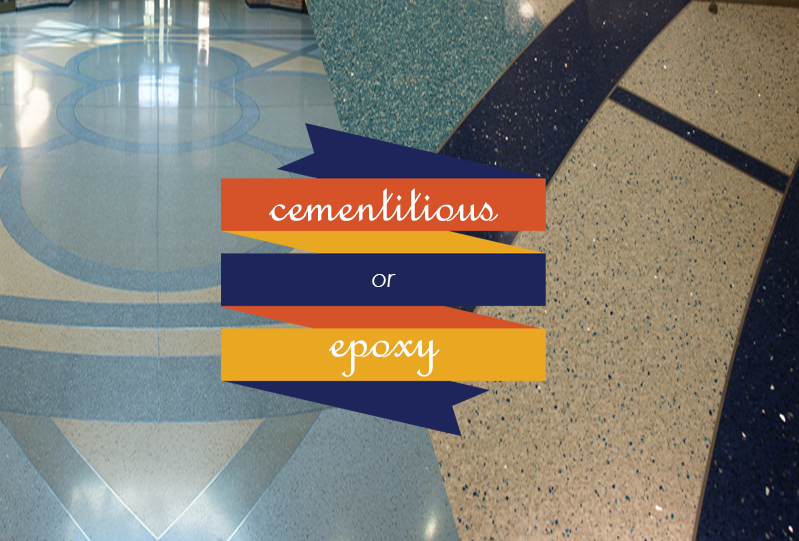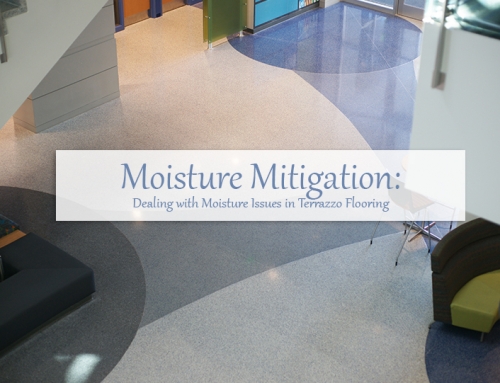I’m sure you’ve noticed that we can’t stop gushing over all of the wonderful characteristics of terrazzo. It’s durable, it’s versatile, it’s beautiful; what ISN’T it, really?
But there is a dilemma that always comes into play when choosing the perfect terrazzo for each individual project:
Cement or Epoxy Terrazzo?
These are the 2 most popular terrazzo matrices and it can be difficult to determine which would best fit your needs. Do you go with cement or epoxy terrazzo for your project?
That’s why I’m here: to help you sort it all out. Check out the chart below to help determine which system would be best for you.

Terrazzo is regarded as one of the most versatile flooring material today. Terrazzo formed during the 15th century by Venetian marble workers who used marble scraps for their terraces. Traditionally terrazzo came in the form of cement using marble chips that were combined together and later ground and polished into a smooth beautiful surface. Epoxy soon entered the market and revolutionized the industry, allowing more design choice including color options and aggregate selections. Epoxy terrazzo lasts a lifetime as well.
Epoxy Terrazzo is the best thin-system available today. The system comes in either 3/8″ to 1/4″ thickness; however, the thing to remember is that it is much lighter in weight than other terrazzo systems giving it an advantage for multi-story use. Some of its other attributes include its limitless color range, decorative patterns, and artwork opportunities, low life-cycle costs, and high chemical resistance.
On the other hand, cement terrazzo uses a cement matrix as opposed to epoxy. Common systems include sand cushion, monolithic, bonded, polyacrylate and rustic terrazzo. These systems are quite thicker and heavier as well. However, a distinct advantage it has over epoxy terrazzo is its use for outdoor applications such as patios, swimming pools, and walkways.
Here are some main differences between epoxy and terrazzo?
- Color Options
- Epoxy Terrazzo has limitless color and design options. Holds color well years later. Colors are often bright and vibrant as well.
- Cement terrazzo does not hold color well. Common colors seen today are pastel-like or darker colors
- Indoor or Outdoors
- Epoxy terrazzo is recommended for indoor use only. This is because epoxy resin does not react well with ultraviolet rays nor heat.
- For cement terrazzo, a rustic system is ideal for outdoor applications.
- Moisture Mitigation
- Epoxy terrazzo may require a moisture mitigation system if the concrete slab is out of tolerance
- Vapor transmissions are not a concern with cement terrazzo floors.
- Strip Geometry
- Epoxy terrazzo has an unlimited strip geometry. This allows a design to extend great lengths of a building.
- Cementitious terrazzo has a rectangular strip geometry.
Still have questions?
Don’t hesitate to shoot me an email at info@doyledickersonterrazzo.com!
Follow us on Social Media:






